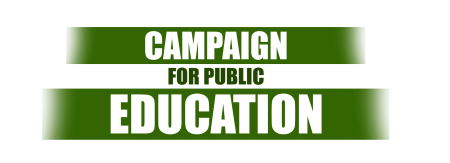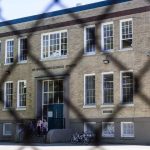The class divide
 The TDSB has its “have” and “have not” schools. But compared with fundraising among its GTA counterparts, the Toronto board is a pauper.
The TDSB has its “have” and “have not” schools. But compared with fundraising among its GTA counterparts, the Toronto board is a pauper.
Its average of $118 per elementary student in school-generated funds was the lowest of the 10 English-language boards in the Greater Toronto Area, according to 2012-13 data obtained by the Star through a freedom of information request.
The York Region Catholic board raised the highest amount — an average of $358 per elementary student.
For some educators, the comparison is just another indicator of a growing poverty crisis in Toronto, where 60 per cent of the city’s census tracts could fall below the poverty line by 2025, according to a 2010 report by University of Toronto professor David Hulchanski.
“We’re starting to face that in our lives right now,” says Vicky Branco, superintendent of the TDSB’s Model Schools for Inner Cities program, which provides extra funding for the board’s 150 neediest schools.
“We can tell you exactly what schools are faced with serious poverty,” she says, “where we desperately need to put in nutrition programs and parents can’t afford to pay the very minimal $2 or $5 a month to support the snack program.”
The money being raised at the school level doesn’t come from provincial government funding; instead, it comes into school bank accounts from a wide variety of sources, including parents who pay extra for programming and trips, or from cafeteria sales, Scholastic book sales and spring fairs or fun days.
What it goes back out to pay for — enriched programming such as scientists in the school, music, theatre and arts programming, gym equipment, computers, playgrounds and outings — is the difference, say critics, between have and have-not schools. Or in this case, boards.
This is the first time the Star has done a comparison of all 10 English boards in the GTA. The data shows that at the elementary level, the region’s Catholic boards, save one, are at the top.
The TDSB has its share of schools in wealthy areas, but there is no other English board in the GTA that comes close to the Toronto board’s proportion of have-not schools.
Nearly 60 per cent of elementary schools in the Toronto public board don’t bring in $100 per kid.
In the other boards, nearly 100 per cent of schools do.
The $8-million Model Schools program, which Branco says has garnered international interest for its success, is funded by the board to help level the playing field between have and have-not schools.
But there are still specific marginalized groups that need more support, who aren’t reaching achievement goals set by the board, says Branco. The board needs “intentional funding to the schools that are affected by poverty,” she says.
The model school money covers a laundry list of items, including in-school dental and eye clinics, summer school and a limited number of iPads. About half of it goes to boosting staff, including coaches and community support workers, to increase student achievement and parent engagement.
But it’s typically not used for enrichment, computers, library books or even team uniforms.
“If a school gets to fundraise and pay for that extra program, that’s where the inequities come in,” says Branco. “If a school fundraises $30,000 a year, they can say we’re giving every classroom $2,000. We can say we want Scientists in the School and we’ll pay for it … or we’ll pay for the ukuleles for Grade 3.
“That’s when you get to the inequities, because really, model schools have to worry about nutrition before they worry about the ukuleles.”
David Crichton, principal of Rose Avenue public school in St. James Town, says his school receives $28,000 from the board as a model school, but it’s not enough.
“I know that the affluent schools are able to raise significant amounts of money, which provides supports in classrooms and opportunity for kids that schools such as mine do not have,” Crichton says.
Instead, he works hard to get company and corporate donations, without which he says his school “would be hurting.”
Rose Avenue gets an annual grant of $50,000 from Manulife, which has paid for arts programming — murals, wire sculpture, storytelling and music — for the past six years. Crichton has negotiated tickets from Young Players Theatre for a third of the standard price. And his school pairs up with private school Branksome Hall as part of the Leacock Foundation’s Circle of Hope. Students from the Rosedale school come to Rose Avenue to tutor, run a free March break program and a summer school for 75 kids.
“I would say the overwhelming majority of schools don’t have that,” says Crichton, who has worked at three schools in the downtown core, including Rose Avenue. At all three, “raising money was always a huge challenge.
“We would kill ourselves and maybe raise a couple of thousand dollars,” he says, “whereas at Jackman Avenue public school they’d have their annual fun fair and raise $30,000, $40,000 or even $50,000.”
In 2012-13, Jackman, which is in Riverdale, actually raised $174,822.00 in donations; a further $30,000 went through the school bank account for excursions and so on. Meanwhile, the Vocal Music Academy at Ryerson Community School, on the other side of town, had zero.
There is also growing awareness in the TDSB that even schools above the model school cutoff are “really struggling.” Right now, only the 150 neediest get funding.
“We all get $14,000 to $30,000,” says Crichton. “But if you’re above the 150 you get nothing. So those are parents who, also for the most part, can’t raise any money. And they’re not considered inner city, so they get virtually no corporations or foundations giving them money.”
The board has recognized the need and is trying to scale up the Model Schools program to the next 100 schools on the TDSB’s Learning Opportunities Index, which rates schools according to need, one being the highest.
That move would mean that more than half the board’s schools are considered at risk.
“In the 450 schools that we have, is it correct to think that 250 are really in need?” asks Branco. “Absolutely. But we don’t have enough money. Eight million dollars is hard to spread across 250 schools. It’s hard to spread across 150.”
The $8 million in model school funding, which the board takes from a $144-million Learning Opportunities Grant from the province, has stayed the same for the past eight years despite the addition of 25 schools to the list each year.
The TDSB has been criticized in the past for not using all of the grant to help children at risk. Boards receive the money based on the socio-economic need and achievement of its students.
“That’s the Catch-22,” says Branco, who was principal of the first model school, Firgrove P.S., in the Jane and Finch neighbourhood. “We generate the $140 million in the Toronto District school budget for it because we have the demographics.
“But unfortunately, due to the needs and the deficit in our buildings and all of our schools, we don’t have the ability to spend all of that money on the demographics that it’s generated for.”
Sheila Cary-Meagher, an outspoken trustee who is in her last term, says the grant is being used to “cover utilities and anything else that comes up,” because it’s “pretty much the only slush fund” the board can draw from to cover its costs, she says.
“So there’s $144 million there. It should be used for kids who are underprivileged, but instead it’s being used for heat.”
In the past, board staff have denied that this is the case. Staff presented a report to trustees last March accounting for how the Learning Opportunities Grant of $144,355,000 was spent. A motion by Cary-Meagher to refer the report to the Inner City and Equity Policy Advisory Committees for further review was voted down.
By PATTY WINSANews reporter
TheStar.com Sat., Sept. 3, 2016


